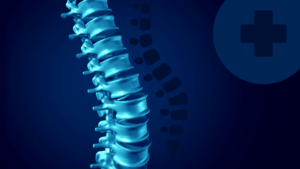Urology billing isn’t your run-of-the-mill medical billing task. It’s a complex arena that demands expertise—a fine-tuned understanding of the intricacies of insurance dealings. In this realm, experience isn’t just a bonus; it’s a necessity. Only a team seasoned in the specifics of urology billing can navigate its intricate pathways effectively.
It’s the systematic process through which healthcare providers submit claims to insurance companies for the array of services they provide to patients. This is where the expertise of medical billing and coding specialists comes into play. They’re the architects of this process, assigning precise codes to a myriad of procedures. These codes are the linchpin, ensuring the smooth flow of urology billing by simplifying complex treatments into standardized forms for insurance billing.
Efficiency for Maximum Revenue
The financial health of urology services hinges on efficiency—timely billing, rigorous follow-up, and successful reimbursement. It’s a careful equilibrium that directly impacts the revenue of your urology practice. Selecting a top-tier medical billing services provider is, without a doubt, one of the most critical decisions a medical service provider can make. It’s a decision that ventures into the intricate business side of urology billing services.
In this blog, we’ll embark on an exploration of the intricate world of urology billing and coding. We’ll delve into the challenges, unveil best practices, and shine a spotlight on the indispensable role played by medical billing professionals in ensuring the financial vitality of urology practices. Join us as we navigate the unique landscape of urology billing and coding, decoding its complexities and uncovering the solutions that drive this specialized field.
Commonly used Codes of Urology Services by ICD-10
- C00 – D49 – Neoplasm
- E00 – E89 – Endocrine, nutritional, and metabolic diseases
- N00-N99 – Diseases of the genitourinary system
- Q50-Q56 – Congenital malformations of genital organs
- R30-R39 – Symptoms and signs involving the genitourinary system.
Types of Surgeries in Medical Billing Urology
- Excision
- Incision/Biopsy
- Catheter introduction
- Transplantation
- Laparoscopy
- Endoscopy (Cystoscopy, Cystourethroscopy, Urethroscopy, etc.,)
- Repairs
Types of Denials in Urology Billing:
- Authorization Denials: These are caused by failure of correct pre-certification, authorization, and notification absence.
- Bundled Denials: These see the refusal of the payor for payment of 2 services billed.
- Non-covered Denials: These occur due to non-coverage of diagnosis by the payor.
- Modifier Denials: These are affected by incorrect use of procedure code or the missing modifier.
Guidelines by National Correct Coding Initiative (NCCI) policy manual
- Insertion of a urinary bladder catheter is a component of the global surgical package. Urinary bladder catheterization (CPT codes 51701, 51702, and 51703) is not separately reportable with a surgical procedure when performed at the time of or just prior to the procedure.
- If an irrigation or drainage procedure is necessary and integral to complete a genitourinary or other procedure, only the more extensive procedure shall be reported. The irrigation or drainage procedure is not separately reportable.
- If a diagnostic endoscopy leads to the performance of a laparoscopic or open procedure, the diagnostic endoscopy may be separately reportable. Modifier 58 may be reported to indicate that the diagnostic endoscopy and non-endoscopic therapeutic procedures were staged or planned procedures.
- Surgical endoscopy includes diagnostic endoscopy, which is not separately reportable. If a diagnostic endoscopy leads to a surgical endoscopy at the same patient encounter, only the surgical endoscopy may be reported.
- CPT code 51700 (Bladder irrigation, simple, lavage, and/or instillation) is used to report irrigation with therapeutic agents or as an independent therapeutic procedure. It is not separately reportable if bladder irrigation is part of a more comprehensive service, such as to gain access to or visualize the urinary system.
- Endoscopic procedures include all minor related functions performed at the same encounter. Although CPT codes may exist to describe these functions, they shall not be reported separately.
- Cystourethroscopy and transurethral procedures include fluoroscopy when performed. CPT codes describing fluoroscopy or fluoroscopic guidance (e.g., 76000, 77002) shall not be reported separately with a cystourethroscopy or transurethral procedure CPT code.
The Must-dos of Urology Billing and Coding
- Do Always Have Human Eyes on Code Selection
In the intricate world of urology billing and coding, precision is paramount. While Electronic Health Record (EHR) systems can be incredibly helpful, they should never replace the critical human element in code selection. These systems are designed to facilitate accurate coding, but the responsibility of ensuring code precision ultimately falls on the provider and billing and coding staff. Each code must be carefully reviewed for accuracy, as risk assessment cannot rely solely on automated suggestions.
- Do Train Providers on Proper Documentation and Coding Procedures
Urology is a field filled with nuanced patient care that transcends the capabilities of billing and coding staff, who lack clinical training. Therefore, it’s imperative to provide ongoing documentation and coding training to urology providers. Ensuring that physicians are well-versed in proper documentation and coding procedures is a collaborative effort. By actively involving providers in code selection and review, you create a cohesive team that can navigate the complexities of urology coding effectively.
- Do Opt for the Right Code
When it comes to CPT coding for urology, efficiency is key. To streamline the process, it’s essential to understand the three primary code categories: Evaluation and Management (E/M) Codes, Procedure Codes, and Add-on Codes.
- E/M Codes: The acronym E/M stands for Evaluation and Management codes. These codes are your go-to for billing professional services, encompassing physician and non physician practitioner clinic visits, hospital visits, or consultations. You’ll commonly find these codes falling within the range of 99202 to 99499.
- Procedure Codes: This category deals with codes tailored for billing diagnostic and treatment services. Whether it’s diagnostics or treatments, these codes cover a wide spectrum of urological services. They usually reside within the range of 50010 to 58999.
- Add-on Codes: Add-on codes play a unique role by identifying procedures conducted in addition to the primary procedure. In the CPT manual, keep an eye out for the “+” symbol, which designates these codes. These codes may become payable when reported alongside the appropriate primary procedure, enhancing accuracy and ensuring comprehensive billing.
By mastering these code categories, you not only expedite the coding process but also ensure precise billing in the dynamic field of urology.
- Do have an Audit Schedule
Undercoding may seem like a tempting strategy to avoid audits, but it’s a risky path in urology billing. Undercoding involves selecting codes that don’t fully capture the scope of the services rendered. While this may sometimes result from oversight, some practices deliberately undercode, believing it reduces the risk of audits. However, undercoding not only leads to lost revenue by failing to report all services accurately, but it also raises red flags for auditors, particularly Medicare. Audits are a reality in the healthcare field, and attempting to evade them through undercoding is not a sustainable solution.
The best approach is to proactively keep your staff up to date with comprehensive training in urology coding best practices. Thorough documentation that supports the services provided is crucial. By embracing coding accuracy, you not only ensure fair reimbursement but also build a reputation for integrity and excellence in urology billing and coding.




